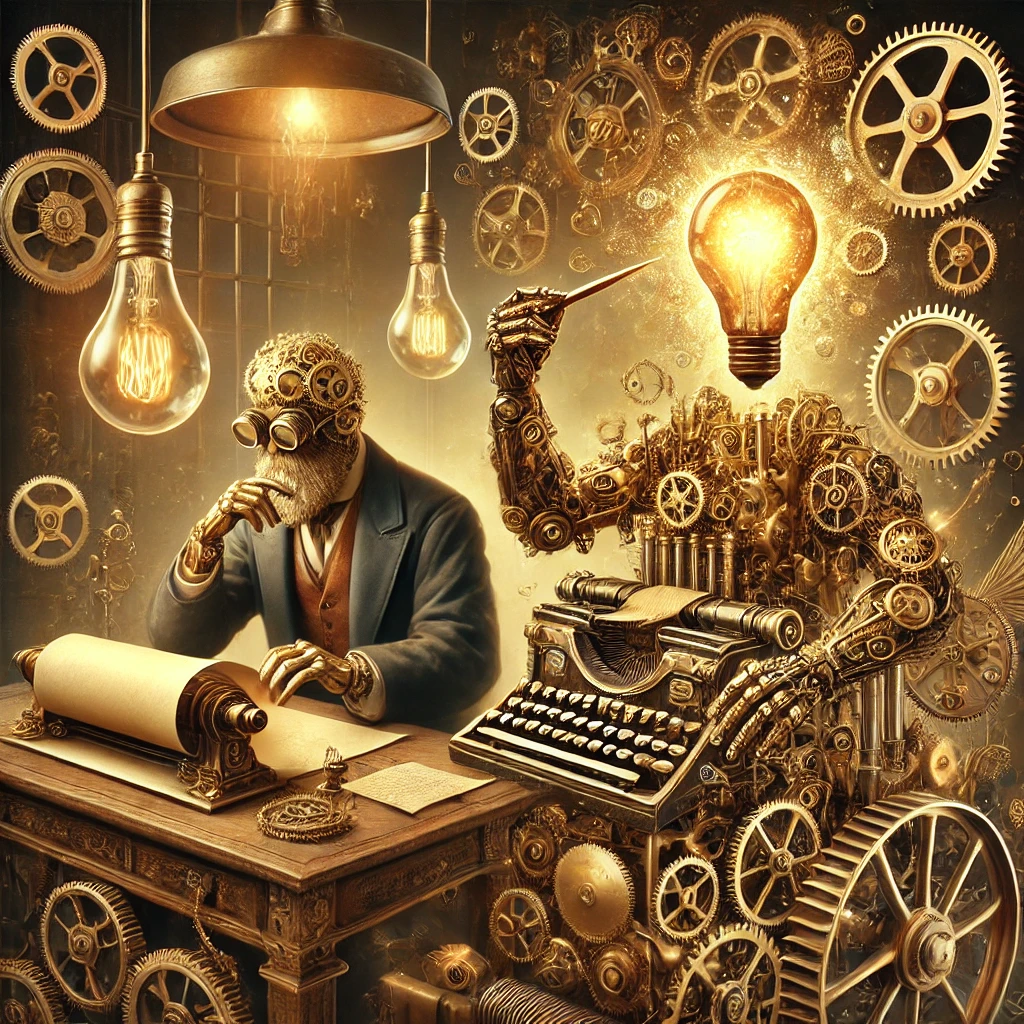It is like instant coffee, or a shrunken pear: too dry to eat, but OK if you add water. Meet "freeze-dried text" – concentrated idea nuggets waiting to be expanded by AI. Copy everything below this paragraph into any AI and watch as each transforms into real text. Caution: AI will hallucinate some references. Remember to type "NEXT" after each expansion to continue. Avoid activating any deep search features – it will slow everything down. This could be how we communicate soon – just the essence of our thoughts, letting machines do the explaining. Perhaps the textbooks of the future will be written that way. Note, the reader can choose how much explanation they really need - some need none, others plenty. So it is a way of customizing what you read.
Mother PromptExpand each numbered nugget into a detailed academic paper section (approximately 500 words) on form-substance discrimination (FSD) in writing education. Each nugget contains a concentrated meaning that needs to be turned into a coherent text.
Maintain a scholarly tone while including:
• Theoretical foundations and research support for the claims. When citing specific works, produce non-hallucinated real reference list after each nugget expansion.
• Practical implications with concrete examples only where appropriate.
• Nuanced considerations of the concept's complexity, including possible objections and need for empirical research.
• Clear connections to both cognitive science and educational practice.
• Smooth transitions that maintain coherence with preceding and following sections
Expand nuggets one by one, treating each as a standalone section while ensuring logical flow between sections. Balance theoretical depth with practical relevance for educators, students, and institutions navigating writing instruction in an AI-augmented landscape. Wait for the user to encourage each next nugget expansion. Start each Nugget expansion with an appropriate Subtitle
Nuggets
1. Form-substance discrimination represents a capacity to separate rhetorical presentation (sentence structure, vocabulary, organization) from intellectual content (quality of ideas, logical consistency, evidential foundation), a skill whose importance has magnified exponentially as AI generates increasingly fluent text that may mask shallow or nonsensical content.
2. The traditional correlation between writing quality and cognitive effort has been fundamentally severed by AI, creating "fluent emptiness" where writing sounds authoritative while masking shallow content, transforming what was once a specialized academic skill into an essential literacy requirement for all readers.
3. Cognitive science reveals humans possess an inherent "processing fluency bias" that equates textual smoothness with validity and value, as evidenced by studies showing identical essays in legible handwriting receive more favorable evaluations than messy counterparts, creating a vulnerability that AI text generation specifically exploits.
4. Effective FSD requires inhibitory control—the cognitive ability to suppress automatic positive responses to fluent text—paralleling the Stroop task where identifying ink color requires inhibiting automatic reading, creating essential evaluative space between perception and judgment of written content.
5. The developmental trajectory of FSD progresses from "surface credibility bias" (equating quality with mechanical correctness) through structured analytical strategies (conceptual mapping, propositional paraphrasing) toward "cognitive automaticity" where readers intuitively sense intellectual substance without conscious methodological application.
6. Critical thinking and FSD intersect in analytical practices that prioritize logos (logical reasoning) over ethos (perceived authority) and pathos (emotional appeal), particularly crucial for evaluating machine-generated content that mimics authoritative tone without possessing genuine expertise.
7. The "bullshit detection" framework, based on Frankfurt's philosophical distinction between lying (deliberately stating falsehoods) and "bullshitting" (speaking without concern for truth), provides empirical connections to FSD, revealing analytical reasoning and skeptical disposition predict resistance to pseudo-profound content.
8. Institutional implementation of FSD requires comprehensive curricular transformation as traditional assignments face potential "extinction" in a landscape where students can generate conventional forms with minimal intellectual engagement, necessitating authentic assessment mirroring real-world intellectual work.
9. Effective FSD pedagogy requires "perceptual retraining" through comparative analysis of "disguised pairs"—conceptually identical texts with divergent form-substance relationships—developing students' sensitivity to distinction between rhetorical sophistication and intellectual depth.
10. The pedagogical strategy of "sloppy jotting" liberates students from formal constraints during ideation, embracing messy thinking and error-filled brainstorming that frees cognitive resources for substantive exploration while creating psychological distance facilitating objective evaluation.
11. Students can be trained to recognize "algorithmic fingerprints" in AI-generated text, including lexical preferences (delve, tapestry, symphony, intricate, nuanced), excessive hedging expressions, unnaturally balanced perspectives, and absence of idiosyncratic viewpoints, developing "algorithmic skepticism" as distinct critical literacy.
12. The "rich prompt technique" for AI integration positions technology as writing assistant while ensuring intellectual substance comes from students, who learn to gauge necessary knowledge density by witnessing how vague AI instructions produce sophisticated-sounding but substantively empty content.
13. Assessment frameworks require fundamental recalibration to explicitly privilege intellectual substance over formal perfection, with rubrics de-emphasizing formerly foundational skills rendered less relevant by AI while ensuring linguistic diversity is respected rather than penalized.
14. FSD serves as "epistemic self-defense"—equipping individuals to maintain intellectual sovereignty amid synthetic persuasion, detecting content optimized for impression rather than insight, safeguarding the fundamental value of authentic thought in knowledge construction and communication.
15. The contemporary significance of FSD extends beyond academic contexts to civic participation, as citizens navigate information ecosystems where influence increasingly derives from control over content generation rather than commitment to truth, making this literacy essential for democratic functioning.










